By SYDNEY J. FREEDBERG JR
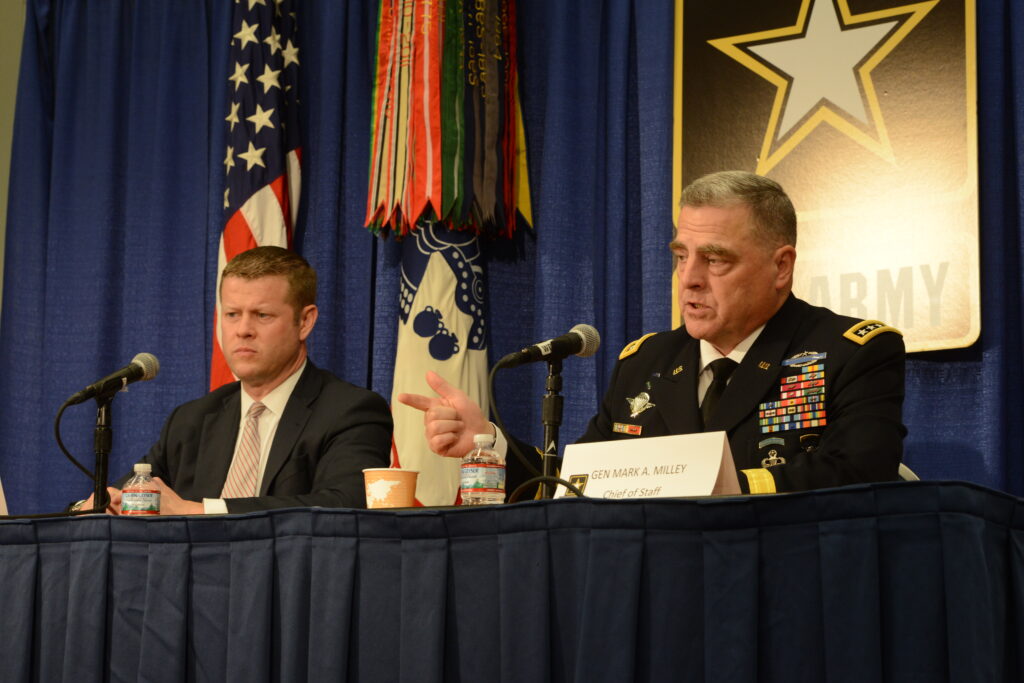 WASHINGTON: The Army needs at least two years to figure out a new, war-ready communications network to replace its current, fragile systems, the acting secretarysaid this week. There’s no a quick fix: The service is effectively starting over on what it’s long described as its No. 1 priority for modernization. A recently created task force called a Cross-Functional Team (CFT) will overhaul the network architecture, Acting Secretary of the Army Ryan McCarthy told reporters, but its major recommendations won’t be ready until 2019, when the budget request for 2020 is submitted. In the meantime, to ensure that troops are ready to “fight tonight” against immediate threats like Russia and North Korea, the Army is urgently seeking off-the-shelf stopgaps from the commercial world.
WASHINGTON: The Army needs at least two years to figure out a new, war-ready communications network to replace its current, fragile systems, the acting secretarysaid this week. There’s no a quick fix: The service is effectively starting over on what it’s long described as its No. 1 priority for modernization. A recently created task force called a Cross-Functional Team (CFT) will overhaul the network architecture, Acting Secretary of the Army Ryan McCarthy told reporters, but its major recommendations won’t be ready until 2019, when the budget request for 2020 is submitted. In the meantime, to ensure that troops are ready to “fight tonight” against immediate threats like Russia and North Korea, the Army is urgently seeking off-the-shelf stopgaps from the commercial world.
Army WIN-T Tactical Communications Node.
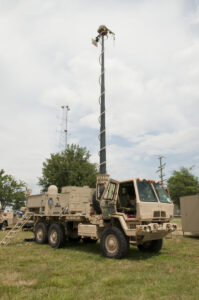 “It’s going to take a few years. What do you in between?” said Gen. Mark Milley, the Army Chief of Staff, speaking alongside McCarthy at a Defense Writers’ Group breakfast Wednesday. “What happens if there’s a conflict? And that’s a real challenge, Sydney, that’s hard, and there’s an element of risk there.”
“It’s going to take a few years. What do you in between?” said Gen. Mark Milley, the Army Chief of Staff, speaking alongside McCarthy at a Defense Writers’ Group breakfast Wednesday. “What happens if there’s a conflict? And that’s a real challenge, Sydney, that’s hard, and there’s an element of risk there.”
The Army is still issuing some units with the current battlefield network, WIN-T Increment 2, which began fielding in 2012 and still hasn’t reached the entire force. (The Hawaii-based 2nd Brigade, 25th Infantry Division is getting its WIN-T kit right now). But the Warfighter Integrated Network – Tactical program will end next year because it isn’t reliable and resilient enough for fast-moving operations against a sophisticated enemy who can jam or hack it. So after a decade working on WIN-T, the Army will take another two years or more to go back to the drawing board.
“Yes, it probably will take a couple of years to get it right. Changing the architecture of our network…the scale is massive,” McCarthy said. “We stood up these Cross-Functional teams a couple of weeks ago, to be honest with you. They are going to influence the ’20 budget” — not 2019.
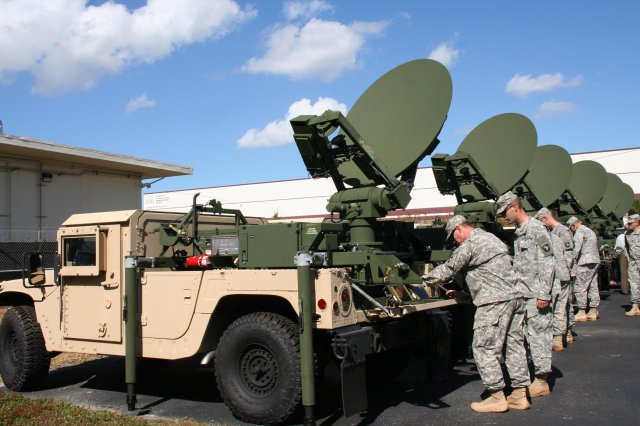
Army soldiers train on SMART-T terminals for AEHF satellite communications.
Halt-Fix-Pivot
The Army strategy is “halt-fix-pivot,” Gen. Milley and Sec. McCarthy explained:
immediately halt programs that simply won’t hold up on a mobile battlefield under sophisticated cyber and electronic attack;
quickly fix systems that can be upgraded to withstand such harsh conditions;
and ultimately pivot from the current clunky patchwork to a new, coherent network architecture.
 “We want to stop those subsets of the programs that we know with certainty will not work…for the combat environment that we envision,” Milley said. He wouldn’t say which specific programs were on the block: “Those are still under evaluation,” he said.
“We want to stop those subsets of the programs that we know with certainty will not work…for the combat environment that we envision,” Milley said. He wouldn’t say which specific programs were on the block: “Those are still under evaluation,” he said.
Gen. Mark Milley
 While some programs must go, Milley continued, “there are other parts of the system that we know can be fixed. We’ve had many meetings with industry (and) industry is already working on those piece parts of the quote, ‘network system’ that can be fixed in order to operate in a highly dynamic and very lethal maneuver battlefield.”
While some programs must go, Milley continued, “there are other parts of the system that we know can be fixed. We’ve had many meetings with industry (and) industry is already working on those piece parts of the quote, ‘network system’ that can be fixed in order to operate in a highly dynamic and very lethal maneuver battlefield.”
“And then, what we do is pivot the entire system of systems…to develop a holistic system that does operate in the (high-intensity) environment,” Milley concluded.
This isn’t about any one program: “It’s stepping back and looking at a common architecture, as opposed to particular issues with hardware (or) software,” McCarthy said. “It will take us several years to review the architecture and make fundamental changes.”
How fundamental? “We went back to the white board , literally, and we started laying out things like first principles,” Milley said. “We used that to evaluate not just WIN-T…but the whole suite.”
“We learned that a lot of these systems don’t talk to each other, within the army or the joint force,” Milley said. “We learned that the system is very, very fragile and is probably not going to be robust and resilient enough to operate in a highly dynamic battlefield with lots of ground maneuver and movement. We know that the system is probably vulnerable to sophisticated nation-state countermeasures.”
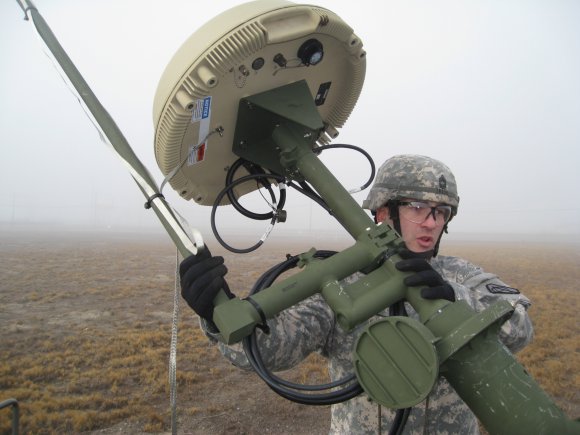
An Army soldier sets up a highband antenna.
Short-Term vs. Long
Going back to the drawing board to fix these problems — the pivot phase — will take “years,” Milley acknowledged, “but the fix part is a much faster piece. Will we be fast enough? Time will tell,” he said. ” I know that we are working extremely hard, and we know we’re against the clock.”
Acting Secretary of the Army Ryan McCarthy
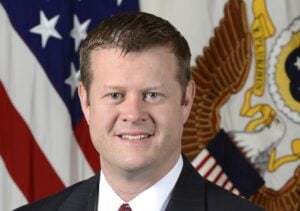 The Army can’t afford another program like WIN-T that takes years just to develop new technology, let alone issue it across the service while private-sector processing power is doubling every 18 months. So McCarthy’s guidance to the Cross-Functional Team overhauling the network, and to the seven other CFTs working on other Army priorities, is to “take every opportunity to look into commercial industry. Buy it off the shelf.”
The Army can’t afford another program like WIN-T that takes years just to develop new technology, let alone issue it across the service while private-sector processing power is doubling every 18 months. So McCarthy’s guidance to the Cross-Functional Team overhauling the network, and to the seven other CFTs working on other Army priorities, is to “take every opportunity to look into commercial industry. Buy it off the shelf.”
But this has pitfalls too. The Army and the other services already bypassed the procurement bureaucracy and rushed off-the-shelf equipment into service in Afghanistan and Iraq, from network tech to Mine-Resistant Ambush-Protected trucks (MRAPs). They had to take shortcuts to save lives, but the result was a lot of wasted money and a patchwork of incompatible equipment.
Ironically, the program that was supposed to bring order to this chaos was WIN-T. Now the Army is halting WIN-T and, once again, embarking on a multi-year quest for one network to rule them all. In the meantime, once again, the service has to keep kludging together partial solutions. The short-term fix may, once again, make the long-term solution harder. The risk of just repeating history is very real
No comments:
Post a Comment